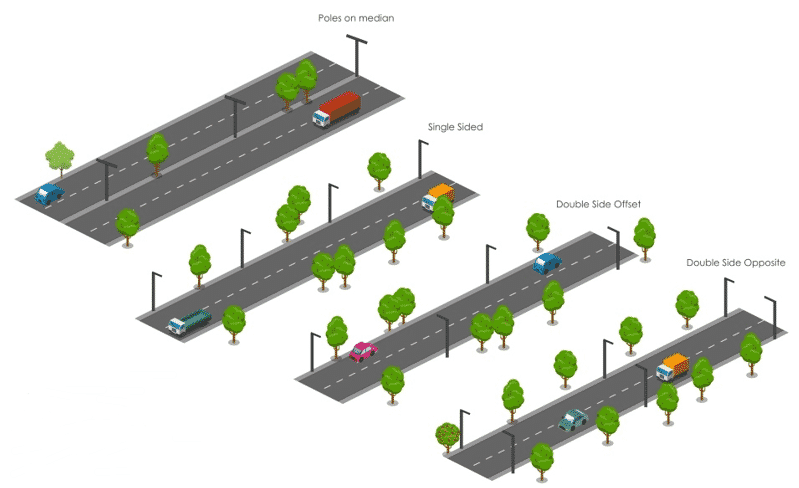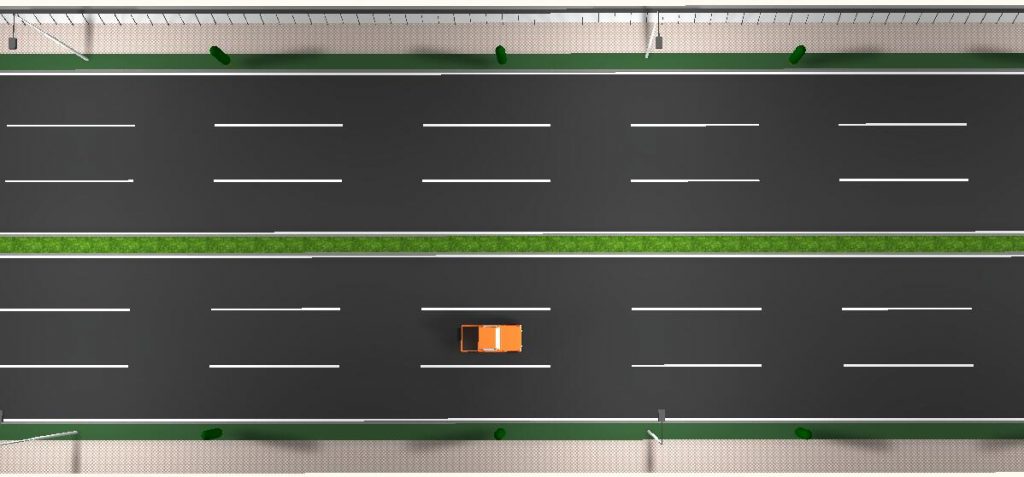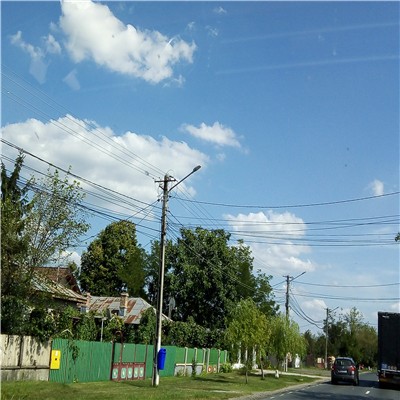Blog
Key Points in the Street Lighting Design -Part II

Requirement as per lighting-class selection table
In addition, to get the requirements from the tender, you can also decide which lighting-class your road should conform to by using the factors in the selection table below. For lighting-class M, these parameters include speed, traffic volume, traffic composition, separation of carriageways, junction density, parked vehicles, ambient luminance, and navigational task. For lighting-class P, these parameters include design speed, use intensity, traffic composition, parked vehicles, ambient luminance, and facial recognition.
Because there are so many related factors, here we only discuss design speed. For example, for design speed, there are five options given across the different lighting classes M and P. The option ‘very high’ (e.g. more than 100 km/h) would apply to motorways (lighting classes M). The option ‘high’ (e.g. between 70 km/h and 100 km/h) would apply primarily to inter-urban single and dual carriageways, but also to urban principal roads between primary destinations (lighting classes M). In urban areas speed limits are 50 km/h on average, ranging from 30 km/h to 70 km/h (e.g. on major distributor roads). The option ‘moderate’ is related to this speed (lighting classes M). In residential areas with or without geometric measures for traffic calming in many cases, the speed limit is set to 30 km/h or less. Here the option ‘low’ would be the appropriate choice (lighting classes P). For areas where pedestrians are considered as main users the speed option ‘very low’, i.e. walking speed, often limited between 5 km/h and 7 km/h, here ‘very low’ should be applied (lighting classes P). If you know how to choose other factors, you can contact us or refer to the EN13201 standard or contact us to learn more.
| Parameter | Options | Weighting Value | WV selected |
| Design Speed | Very high | 2 | 1 |
| High | 1 | ||
| Moderate | -1 | ||
| Low | -2 | ||
| Traffic volume | High | 1 | 0 |
| Moderate | 0 | ||
| Low | -1 | ||
| Traffic composition | Mixed with high percentage of non-motorized | 2 | 1 |
| Mixed | 1 | ||
| Motorized only | 0 | ||
| Separation of carriageway | No | 1 | 1 |
| Yes | 0 | ||
| Junction density | High | 1 | 0 |
| Moderate | 0 | ||
| Parked vehicles | Present | 1 | 0 |
| Not present | 0 | ||
| Ambient luminance | High | 1 | 0 |
| Moderate | 0 | ||
| Low | -1 | ||
| Navigational task | Very difficult | 2 | 1 |
| Difficult | 1 | ||
| Easy | 0 | ||
| Sum of Weighting Values | SWV=4 |
The number of lighting-class M = 6-SWV= M2, then you can choose lighting-class M2 as the requirement for your project.
| Parameter | Options | Weighting Value | WV selected |
| Design Speed | Low | 1 | 0 |
| Very low (walking speed) | 0 | ||
| Use intensity | Busy | 1 | 0 |
| Normal | 0 | ||
| Quiet | -1 | ||
| Traffic composition | Pedestrians, cyclists and motorized traffic | 2 | 1 |
| Pedestrians and motorized traffic | 1 | ||
| Pedestrians and cyclists only | 1 | ||
| Pedestrians only | 0 | ||
| Cyclists only | 0 | ||
| Parked vehicles | Present | 1 | 1 |
| Not present | 0 | ||
| Ambient luminance | High | 1 | 0 |
| Moderate | 0 | ||
| Low | -1 | ||
| Facial recognition | Necessary | Additional requirements | 0 |
| Not necessary | No additional requirements | ||
| Additional requirements | SWV= 2 |
The number of lighting-class M = 6-SWV= P4, then you can choose lighting-class P4 as the requirement for your project.
Others which we should pay attention to
Physical factors can either enhance or detract from the performance of the roadway lights, so it is imperative to give these factors ample consideration when creating a lighting system.
Light poles should be strong enough to carry and support light fixtures and should be the appropriate height and spacing for optimal lighting. When planning the street lighting layout, structures that obstruct traffic, such as trees, should also be considered. The following table shows several common road conditions, as well as the corresponding pole height, pole spacing, and boom.
Reference standards of the layout of poles
| No | Luminaire Category | Bracket | Poles Arrangement and Clearance | Carriageway | ||||||
| Type(layout of poles) | Outreach (m) | Clearance from the road (m) | Mounting Height (m) | Spacing (m) | Median Width (m) | Type | lanes | Width (m) | ||
| 1 | A1 | Single sided | 0.5 | Single Sided, 1 | 5 | 24 | – | Single | 2 | 6 |
| 2 | A2 | Single sided | 1.5 | Single Sided, 2.75 | 8 | 30 – 35 | – | Single | 2 | 6 |
| 3 | A2 | Double T-Shape (poles on median) | 1.5 | Central Verge Position (symmetrically) | 8 | 30 – 35 | 2 | Double | 1 | 7 each |
| 4 | A3 | Single sided | 0.5-1.5 | Single Sided, 2.75 | 10 | 35 – 40 | – | Single | 2 | 7.5 |
| 5 | A3 | Double T-Shape (poles on median) | 0.5-1.5 | Central Verge Position (symmetrically) | 10 | 35 – 40 | 4 | Double | 2 | 7.5 each |
| 6 | A3 | Double row, opposing Pole | 0.5-1.5 | Double row, opposing Pole, 1 | 10 | 35-40 | 1-2 | Single | 3 | 10.5 each |
| 7 | A4 | Single sided | 0.5 | Single Sided, 2.75 | 12 | 40 – 45 | – | Single | 2 | 7.5 |
| 8 | A4 | Double T-Shape (poles on median) | 0.5 | Central Verge Position (symmetrically) | 12 | 40 – 45 | 6 | Double | 2 | 7.5 each |
| 9 | A4 | Single sided | 0.5 | Single Sided, 2.75 | 14 | 45 – 50 | – | Single | 2 | 7.5 |
| 10 | A4 | Double U-Shape (poles on median) | 0.5 | Central Verge Position (symmetrically) | 14 | 45 – 50 | – | Double | 3 | – |
Regarding the layout of the poles, please check the below diagram.

Smart control
Smart control systems are infrastructure communication systems that allow instantaneous control of lighting systems. They can automatically adjust lighting levels according to their surroundings. Studies have shown that LED street lights combined with intelligent street lighting control systems can maximize the lifespan of lamps, minimize maintenance costs, and save up to 80% in energy. Of course, the adjusted brightness also needs to meet the corresponding lighting requirements. For example, for a road that needs to meet the M3 requirements, when there are few vehicles at midnight, the illuminance requirements may be reduced by M5. Refer to the table of Lighting Class M, then the brightness of our lamps can be adjusted to 50% of the initial brightness. This not only saves power consumption but also meets the corresponding lighting needs.
Street lighting design reference
When we have clear the points that need to be paid attention to in road lighting, let’s go back to how to plan our project to meet the requirements of the project, we think Dialux is a good means. Assume that a two-way six-lane road lighting simulation needs to be made, the object lane is separated by a middle partition island, and high-pole street lights are arranged on both sides of the road. Motorways and pedestrian paths are divided by lawns. Set up street lighting on the lawn to illuminate motor vehicle roads and sidewalks.
Through the table, we choose the scheme of installing street lights on the opposite side of A3, setting the width of the two-way eight lanes to be 28 meters in total, and the width of the middle separation island to be 1 meter. The width of the lawn is 1 meter, a total of 2 meters. The width of the pedestrian path is 2 meters, a total of 4 meters. The motor vehicle lane is 3.5 meters, a total of 21 meters. The layout of the road and street lights is as below.

And we used our Rifle series 100W street light with 15500lm and T2M53007 lens. Meanwhile, the space is 40m and the lighting simulation calculation results are as follows
| Calculation Field List | Standard: EN 13201 | ||||
| Valuation Field Roadway | (All lighting performance requirements are met.) | ||||
| Selected Lighting Class: ME3a | Lav [cd/m²] | U0 | Ul | TI [%] | SR |
| Calculated values: | 1.16 | 0.58 | 0.75 | 14 | 0.82 |
| Required values according to class: | ≥ 1.00 | ≥ 0.40 | ≥ 0.70 | ≤ 15 | ≥ 0.50 |
| Fulfilled/Not fulfilled: | √ | √ | √ | √ | √ |
Street lighting project reference
Oleder has 6 years of experience in street lamp production. Our company’s products have served more than 1,300 customers around the world. There are countless street lighting projects, large and small. We are proud to share our successful road lighting project with you here. The image below is an urban street lighting project for our Czech client. The project was completed in 2015, and the customer chose our OLEQ2 series street light with an installation height of 6M to replace the original 250W metal halide light after street lighting design. At first, the customer thought that at least 100W LED lamps were needed to meet their lighting requirements. Through communication with customers, we confirmed the corresponding requirements and road conditions. Finally, with the help of the Dialux lighting simulation, we replaced the original lamps with 65W OLEQ2 series street lamps. The lighting effect after installation is very good, the measured ground lux value is 30% higher than that before the renovation, and the energy-saving rate reaches 70%. Oleder is very happy that the customer’s needs have been perfectly solved, and thanks to the street lighting design team of Oleder for giving reasonable suggestions.
CATEGORIES
CONTACT US
Contact: Royce O'young
Phone: 15920570517
Tel: 0086-20-37716973
Email: r.oyoung@oleder-lighting.com
Add: Room 335,#1 Xianke 1st Rd, Honglitronic Group,Huadu ,510890, Guangzhou,P.R.C.

 Sales
Sales